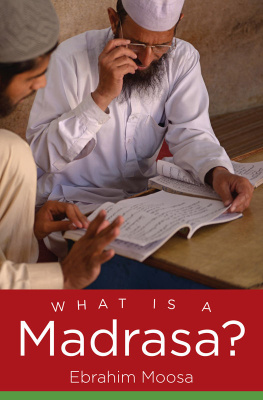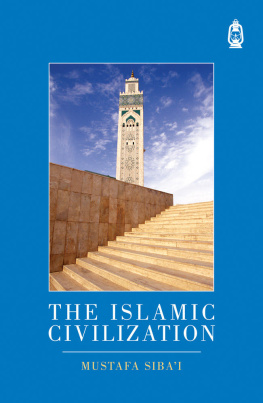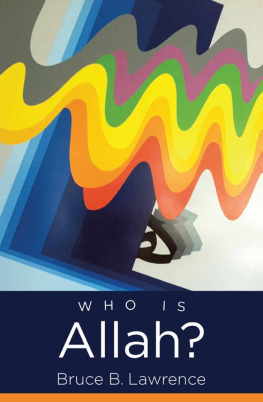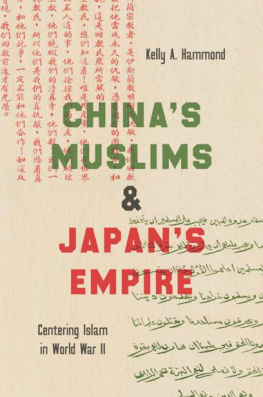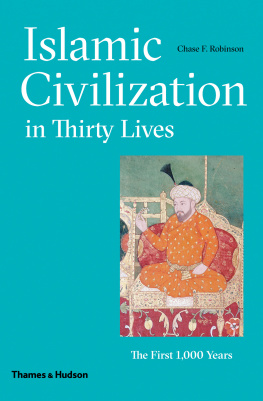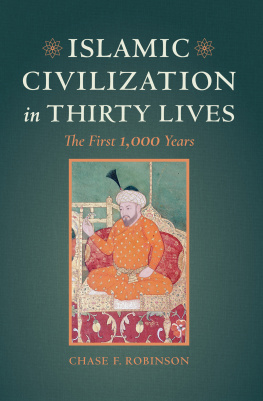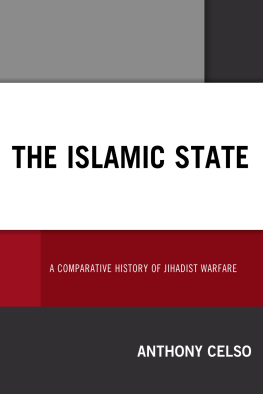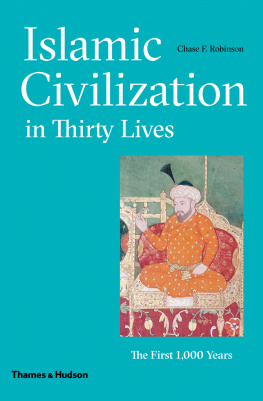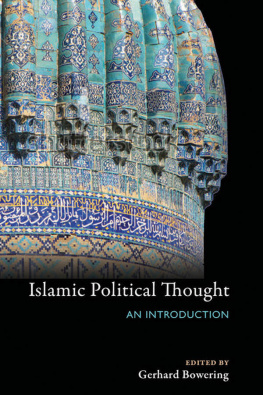Ebrahim Moosa - What Is a Madrasa? (Islamic Civilization and Muslim Networks)
Here you can read online Ebrahim Moosa - What Is a Madrasa? (Islamic Civilization and Muslim Networks) full text of the book (entire story) in english for free. Download pdf and epub, get meaning, cover and reviews about this ebook. year: 2015, publisher: The University of North Carolina Press, genre: Religion. Description of the work, (preface) as well as reviews are available. Best literature library LitArk.com created for fans of good reading and offers a wide selection of genres:
Romance novel
Science fiction
Adventure
Detective
Science
History
Home and family
Prose
Art
Politics
Computer
Non-fiction
Religion
Business
Children
Humor
Choose a favorite category and find really read worthwhile books. Enjoy immersion in the world of imagination, feel the emotions of the characters or learn something new for yourself, make an fascinating discovery.
- Book:What Is a Madrasa? (Islamic Civilization and Muslim Networks)
- Author:
- Publisher:The University of North Carolina Press
- Genre:
- Year:2015
- Rating:4 / 5
- Favourites:Add to favourites
- Your mark:
- 80
- 1
- 2
- 3
- 4
- 5
What Is a Madrasa? (Islamic Civilization and Muslim Networks): summary, description and annotation
We offer to read an annotation, description, summary or preface (depends on what the author of the book "What Is a Madrasa? (Islamic Civilization and Muslim Networks)" wrote himself). If you haven't found the necessary information about the book — write in the comments, we will try to find it.
What Is a Madrasa? (Islamic Civilization and Muslim Networks) — read online for free the complete book (whole text) full work
Below is the text of the book, divided by pages. System saving the place of the last page read, allows you to conveniently read the book "What Is a Madrasa? (Islamic Civilization and Muslim Networks)" online for free, without having to search again every time where you left off. Put a bookmark, and you can go to the page where you finished reading at any time.
Font size:
Interval:
Bookmark:
What Is a Madrasa?
Islamic Civilization and Muslim Networks
CARL W. ERNST AND BRUCE B. LAWRENCE, EDITORS
Highlighting themes with historical as well as contemporary significance, Islamic Civilization and Muslim Networks features works that explore Islamic societies and Muslim peoples from a fresh perspective, drawing on new interpretive frameworks or theoretical strategies in a variety of disciplines. Special emphasis is given to systems of exchange that have promoted the creation and development of Islamic identitiescultural, religious, or geopolitical. The series spans all periods and regions of Islamic civilization.
A complete list of titles published in this series appears at the end of the book.
Madrasa?
Ebrahim Moosa
The University of North Carolina Press CHAPEL HILL
2015 The University of North Carolina Press
All rights reserved
Designed by Kimberly Bryant
Set in 10.2/14 Charis by Westchester Publishing Services
Manufactured in the United States of America
The paper in this book meets the guidelines for permanence and durability of the Committee on Production Guidelines for Book Longevity of the Council on Library Resources. The University of North Carolina Press has been a member of the Green Press Initiative since 2003.
Jacket illustration: At Jamia Naeemia, a madrasa in Lahore, Pakistan. Photograph by Amjad Perez.
Library of Congress Cataloging-in-Publication Data
Moosa, Ebrahim.
What is a madrasa? / Ebrahim Moosa.
pages cm.(Islamic civilization and Muslim networks)
Includes bibliographical references and index.
ISBN 978-1-4696-2013-8 (cloth : alk. paper)ISBN 978-1-4696-2014-5 (ebook)
1. Madrasahs. 2. Islamic education. 3. Islamic religious education. I. Title.
LC904.M66 2015
378'.077dc23
2014034904
Portions of the Prologue and Chapter 1 were first published in the Boston Review as Inside Madrasa: A Personal Story on January 1, 2007; the author thanks the Review for permission to reproduce this material here.
For Muneer Fareed
I have danced before idols and worn the holy thread, so that
The shaykh of the city may become a man of God by calling me a heretic.
Now they run away from me, now they associate with me;
In this desert, they do not know whether I am hunter or prey.
A heart that lacks warmth can ill profit from the company of a man;
Come with red-hot copper, so that my elixir can work on you.
Muhammad Iqbal, Persian Psalms , trans. Mustansir Mir
But for us existence is still enchanted. Its still
Beginning in a hundred places. A playing
of pure powers no one can touch and not kneel to and marvel.
Faced with the unutterable, words still disintegrate...
And ever new, out of the most quivering
stones, music builds her divine house in useless space.
Rainer Maria Rilke, The Sonnets to Orpheus
Contents
Figures, Illustrations, and Map
FIGURES
ILLUSTRATIONS
MAP
Note on Transliteration and Translation
Arabic transliteration in the text and notes is limited to ayn where indicated and hamza only in the middle of a word. Otherwise I have dispensed of hamzas as in Abu and written Abu and used ulama instead of ulama. I have used the term Darul Uloom without standard transliteration features, since most madrasas transliterate in that form. I have also improvised a convenient form of transliteration for the benefit of nonspecialist readers, such as Abdul Ali instead of the Abd al-Ali. In the bibliography, however, I have used a detailed transliteration system in the event that specialists wish to track some of my sources.
Quran translations are from Thomas Cleary, The Quran: A New Translation and Muhammad Asad, The Message of the Quran with occasional amendments.
Inside Madrasas
One spring morning a few years ago, I walked through the town of Deoband, home to Indias most famous Sunni Muslim seminary. A clean-shaven man, his face glowing with sarcasm, called out to me. Looking for terrorists? he asked in Urdu. Swiftly and instinctively I protested and yelled back at him, I have every right to visit my alma mater. With a sheepish, almost theatrical grin, he turned and walked away.
I shouldnt have been so annoyed. The century-old seminary in Deoband came under intense scrutiny after the Taliban leadership claimed an ideological affiliation with similar institutions in Pakistan and Afghanistan. Since September 11, 2001, journalists, politicians, and diplomats have descended periodically on this town near Delhi in the northern state of Uttar Pradesh. This state is one node, along with the province of Pakistans Punjab, with Lahore as its capital, in what might be called an extended intellectual and spiritual heartland of Islam that spreads across the Indo-Pakistan subcontinent.
However, Muslim seminaries, or madrasas, everywhere became stigmatized once the Taliban was linked to the terror mastermind Osama bin Laden. Everyone conveniently ignored the history of the special, makeshift madrasas that sprang up on the Pakistani side of the Afghan border. These borderland madrasas served as refugee camps for youth in the aftermath of the Soviet invasion that ravaged Afghanistan during the Cold War. The United States supported the war of the Afghan mujahidin against the Soviets.
Since then, top-level government officials, former heads of state like U.S. president George Bush and British prime minister Tony Blair, along with a chorus of journalists, pundits, and scholarssingled out madrasas as breeding grounds for terrorists. They did this without providing a shred of convincing evidence to warrant the indictment of a large, complex network of religious schools associated with multiple Muslim sects and ideologies.
In popular Western media parlance, the mere mention of the word madrasa conjures up an us versus them dynamic. This strategy effectively mobilizes unwitting audiences to a mindset that does not advance mutual understanding among civilizations and cultures. Revered by many Muslims but reviled, if not feared, by many non-Muslims, madrasas are the single most widely used educational resource to cultivate religious learning in parts of the Muslim world.
Low-budget, monastery-like Muslim seminaries dot the landscape of South Asia. The schools flourish mainly in India, Pakistan, Afghanistan, and Bangladesh as well as in the South Asian diaspora, but similar institutions are equally visible in different shapes and forms in East Asia, especially Indonesia, Malaysia, southern Thailand, and parts of Africa and the Middle East, especially Iran. Young adult males study in the South Asian institutions, but there is a growth in segregated madrasas dedicated to the education of females.
Madrasas specialize in the study of classical theological and legal texts as well as commentaries on the Muslim scripture, the Quran. They place special emphasis on studying the life and teachings of Islams prophet, Muhammad, and are engrossed in complex details as to how rules and morals should regulate public and private conduct according to religious norms. All the secondary disciplines that are needed to gain proficiency in these primary fields of study are also taught, such as Arabic and Persian grammar and literature, rhetoric, logic, and philosophy, among other subjects.
Noted journalistic voices like Peter Bergen, William Dalrymple and, belatedly, policy experts Rebecca Winthrop and Corinne Graff of the Brookings Institution now acknowledge that not all madrasas can be indicted Yet sympathetic sound bites do not provide an accurate picture of what happens inside madrasas, nor do they humanize the inhabitants of these age-old institutions. The gulf in perception is captured in the disparity of firmly held convictions as portrayed by insider versus outsider perspectives on the madrasa-sphere of South Asia.
Next pageFont size:
Interval:
Bookmark:
Similar books «What Is a Madrasa? (Islamic Civilization and Muslim Networks)»
Look at similar books to What Is a Madrasa? (Islamic Civilization and Muslim Networks). We have selected literature similar in name and meaning in the hope of providing readers with more options to find new, interesting, not yet read works.
Discussion, reviews of the book What Is a Madrasa? (Islamic Civilization and Muslim Networks) and just readers' own opinions. Leave your comments, write what you think about the work, its meaning or the main characters. Specify what exactly you liked and what you didn't like, and why you think so.

